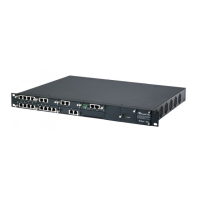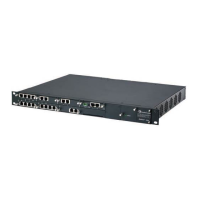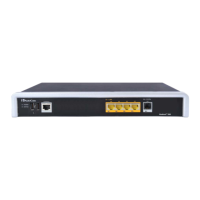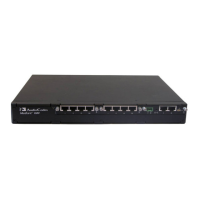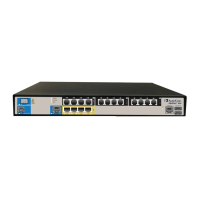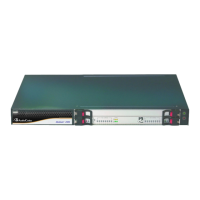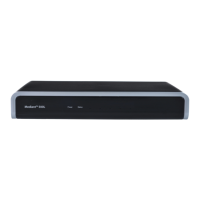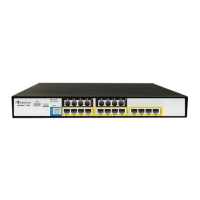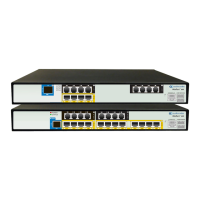Version 7.0 623 Mediant 3000
User's Manual 34. SBC Manipulations
INVITE sip:1000@10.2.2.3;user=phone;x=y;z=a SIP/2.0
To: <sip:1000@10.2.2.3;user=phone>
to
INVITE sip:9721000@ITSP;user=phone;x=y;z=a SIP/2.0
To: <sip:9721000@ITSP;user=phone>
Destination IP Group name (SIP URI host name) from "10.2.2.3" to "ITSP":
INVITE sip:1000@10.2.2.3;user=phone;x=y;z=a SIP/2.0
To: <sip:1000@10.2.2.3;user=phone>
to
INVITE sip:9721000@ITSP;user=phone;x=y;z=a SIP/2.0
To: <sip:9721000@ITSP;user=phone>
34.1 Configuring IP-to-IP Inbound Manipulations
The IP to IP Inbound Manipulation table lets you configure up to 100 IP-to-IP Inbound
Manipulation rules. An IP-to-IP Inbound Manipulation rule defines a manipulation sequence
for the source or destination SIP URI user part of inbound SIP dialog requests. You can
apply these manipulations to different SIP dialog message types (e.g., INVITE or
REGISTER) and SIP headers as follows:
Manipulated destination URI user part are done on the following SIP headers:
Request-URI, To, and Remote-Party-ID (if exists)
Manipulated source URI user part are done on the following SIP headers: From, P-
Asserted-Identity (if exists), P-Preferred-Identity (if exists), and Remote-Party-ID (if
exists)
The configuration of an IP-to-IP Inbound Manipulation rule includes two areas:
Rule: Defines the matching characteristics of an incoming SIP dialog (e.g., source
host name).
Action: Defines the operation that must be done if the incoming call matches the
characteristics of the rule. In other words, the device manipulates the source or
destination SIP URI user part of the SIP dialog (e.g., removes a user-defined number
of characters from the left of the SIP URI user part).
To configure and apply an IP-to-IP Inbound Manipulation rule, the rule must be associated
with a Routing Policy. The Routing Policy associates the rule with an SRD(s). Therefore,
the Routing Policy lets you configure manipulation rules for calls belonging to specific
SRD(s). However, as multiple Routing Policies are relevant only for multi-tenant
deployments (if needed), for most deployments, only a single Routing Policy is required. As
the device provides a default Routing Policy ("Default_SBCRoutingPolicy"), when only one
Routing Policy is required, the device automatically assigns the default Routing Policy to
the routing rule. If you are implementing LDAP-based routing (with or without Call Setup
Rules) and/or Least Cost Routing (LCR), you need to configure these settings for the
Routing Policy (regardless of the number of Routing Policies employed). For more
information on Routing Policies, see ''Configuring SBC Routing Policy Rules'' on page 616.
Note: The IP Group table can be used to configure a host name that overwrites the
received host name. This manipulation can be done for source and destination IP
Groups (see ''Configuring IP Groups'' on page 343).
The following procedure describes how to configure IP-to-IP Inbound Manipulation rules
through the Web interface. You can also configure it through ini file
(IPInboundManipulation).
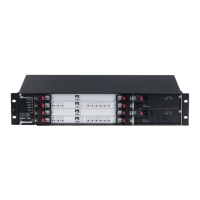
